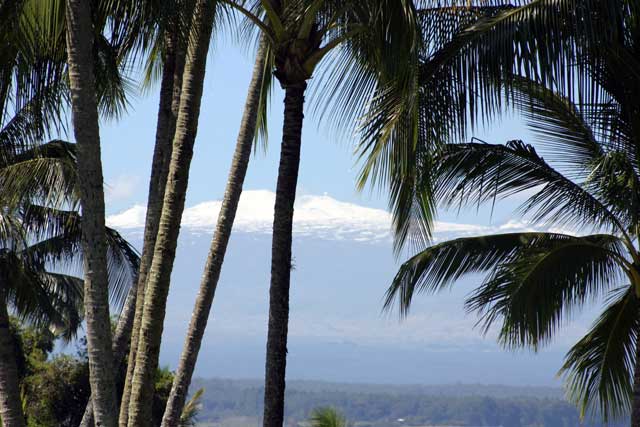Hawaii: Tropical sun, surf - and heli-skiing

Hawaii's mild climate, warm ocean and gentle breezes make it the perfect holiday destination to visit any time of the year, but the variations in the weather across the islands can be quite surprising. Hawaii boasts 11 of the 13 climate zones in the world, each with unique weather characteristics. On the nightly local news, you'll find surf reports for each side of the islands, along with wind and rainfall forecasts.
Hawaii is one of the greenest places on Earth. Every day, it rains somewhere on the islands, and the gentle misting variety, referred to as kilihune, is great for cooling off. The volcanic crater of Mount Waialeale on the island of Kauai receives an average of 1,234cm of rainfall each year and is considered one of the wettest places on Earth.
The Hawaiian islands offer such contrasts because of the dramatic variation of terrain. On the island of Hawaii, also known as the Big Island, you can hit the beach and soak up the sun, then heli-ski at the top of Mauna Kea in the same day. Thanks to the action of active sea breezes, the cloud cover in Hawaii does not usually stay put for very long. Clouds tend to hang above the mountains, drop rain and move on. So if you happen to get caught in a sudden downpour or light rain, it should clear up within minutes. One of the benefits of a sharp shower is the fact that it is usually accompanied by a rainbow. Rainbows, or anuenue are abundant across the islands.
Hawaii has only two seasons: summer, known locally as kau, which runs from May to September; and winter, or ho'olio, the cooler season, from October to April. It is only relatively cooler, as temperatures dip by only four or five degrees in winter.
Where you are on a Hawaiian island makes more of a difference to the temperature, wind and rain that you will experience. The east-facing side, or windward side, of each island is usually the cool, wet and windy side, while the west-facing side, the leeward side, is warm and dry.
Because Hawaii sits on the edge of a tropical zone, the islands are prone to strong trade winds and an occasional tropical storm. Although hurricanes are rare, the islands are vulnerable to Pacific Ocean storms generated to the north. In some cases, the islands will only experience the aftershock of storms with heavy swells, rains and super-size waves. Only four hurricanes have been recorded in the islands since 1957.
Dr Liz Bentley is founder of the Weather Club, formed by the Royal Meteorological Society to promote an appreciation and understanding of the weather. Visit theWeatherClub.org.uk for more information.
Subscribe to Independent Premium to bookmark this article
Want to bookmark your favourite articles and stories to read or reference later? Start your Independent Premium subscription today.

Join our commenting forum
Join thought-provoking conversations, follow other Independent readers and see their replies